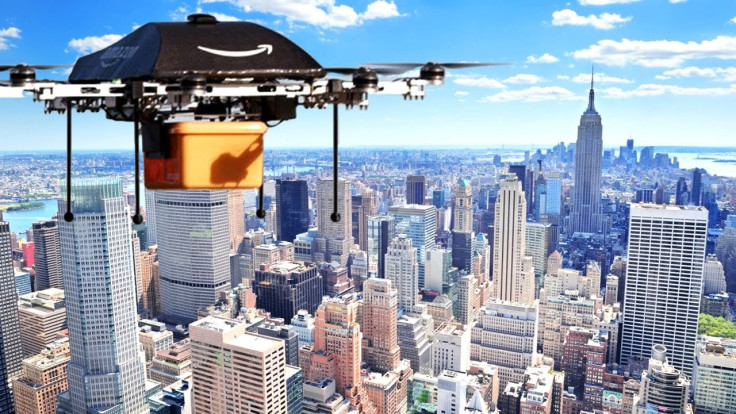FAA proposes helicopter drone rules that will scupper Amazon Prime Air dreams
White House has also issued regulations on how data collected by UAVs can be used by federal agencies

The Federal Aviation Administration (FAA) in the US has at long last revealed proposals for commercial helicopter drone regulations, but the bad news is that Amazon's Prime Air delivery service definitely won't be happening if they are approved.
The proposed rules state that helicopter drones weighing up to 55 pounds (24kg) can be flown during daylight hours, as long as they stay within the line of sight of the drone operator, are flying at a speed of less than 100mph and stay below 500ft in the air.
Not only that, but unmanned aerial vehicles (UAVs) cannot be used to drop off objects.
Bad luck, Amazon
Unfortunately for Amazon, this means that the internet giant's planned Prime Air delivery service won't be possible in the US, but the company is still keen to deploy unmanned aerial deliveries in other countries.
"The FAA needs to begin and expeditiously complete the formal process to address the needs of our business, and ultimately our customers," Amazon's vice-president of global public policy Paul Misener told the Guardian.
"We are committed to realising our vision for Prime Air and are prepared to deploy where we have the regulatory support we need."
However, the FAA's decision will be enormously helpful for businesses that don't need to deliver items, such as farmers that want to monitor their crops, videographers recording events, or those collecting aerial footage for clients such as real-estate agents.
Prior to releasing the rules, the FAA gave BP permission to use helicopter drones to search for oil in Alaska and the Arctic Ocean, as well as permitting UAVs to be used on closed film sets when operated by a team of three people at all times.
Requirements for operators
As for helicopter drone pilots, they will need to be at least 17 years of age, and have to be vetted by the Transportation Security Administration and pass an aeronautics knowledge test every two years.
On the plus side, drone operators won't be required to obtain the flight hours or medical rating that a private pilot's licence entails.
These rules only apply to commercial pilots however – hobbyist helicopter drone operators will need to follow the rules specified in Sec. 336 of Public Law 112-95.
Comment invited on nano drones
The FAA is also proposing that more leeway could be possible regarding the legislation for "nano drones" – i.e. tiny helicopter drones weighing less than 4.4 pounds.
The public is invited to provide comment about this classification, as well as on how the FAA's unmanned aircraft systems (UAS) testing site programme can be improved to spur innovation.
"We have tried to be flexible in writing these rules," said FAA Administrator Michael Huerta.
"We want to maintain today's outstanding level of aviation safety without placing an undue regulatory burden on an emerging industry."
At the same time, the White House has also issued guidelines about how government agencies are allowed to use any surveillance data gathered from helicopter drones.
Federal agencies will have to publicly disclose where in the US they are flying UAVs, as well as what they are doing with the data they collect, and they must not collect, use or distribute the data in such a way that would violate the First Amendment or discriminate against citizens.
© Copyright IBTimes 2025. All rights reserved.






















